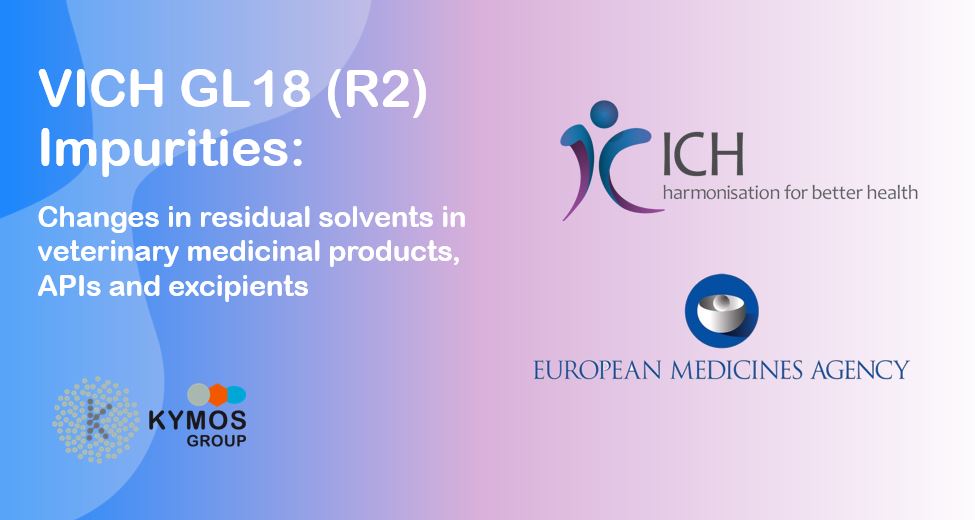
As stated by the EMA (European Medicines Agency), residual solvents are organic volatile chemicals used or produced during the manufacture of active substances or excipients, as well as in the preparation of veterinary medicinal products. These solvents are not completely removed by standard manufacturing techniques and can pose risks to the target animal and consumers of products derived from treated food-producing animals.
VICH GL18 (R2) Impurities
VICH GL18 (R2) is the guideline that regulates this kind of solvents in veterinary drugs and is aligned with the principles of ICH Q3D (R8), which is centered on products for human use. This guide recommends the use of less toxic solvents and establishes acceptable levels for some residual solvents based on their toxicological profiles.
The present article focuses on the changes that the new revision of the guideline (R2) has undergone which are modifications in the classification of some solvents and the addition of new ones.
Classification of Residual Solvents:
Residual solvents are classified into four categories based on their risk to animal health and consumer safety:
- Class 1 Solvents (solvents to be avoided): These solvents include known human carcinogens, strongly suspected human carcinogens, and environmental hazards. Their use should be avoided, unless it is strongly justified for a significant therapeutic advance.
- Class 2 Solvents (solvents to be limited): Class 2 solvents comprise non-genotoxic animal carcinogens or substances that may cause other irreversible toxicities, such as neurotoxicity or teratogenicity.
- Class 3 Solvents (solvents with low toxic potential): Considered to have low toxic potential to animals and humans. They have no known health-based exposure limits, and their presence in veterinary medicinal products is acceptable up to a certain daily exposure level.
- Solvents with insufficient toxicological data: Some solvents lack sufficient toxicological data to establish a permitted daily exposure (PDE), although justification should be provided for their usage.
VICH GL18 (R2) Changes
As stated before, some solvents have changed their classification and some new ones have been added:
- Cumene has been reclassified as a class 2 solvent (previously class 3)
- Methylisobutylketone has been reclassified as a class 2 solvent (previously class 3)
- Cyclopentyl methyl ether has been added as a class 2 solvent (new)
- Tertiary-butyl alcohol (tert-butanol) has been added as a class 2 solvent (new)
- 2-Methyltetrahydrofuran has been added as a class 3 solvent (new)
- Triethylamine has been added as a class 3 solvent (new)
Kymos’ expertise on residual solvents analysis
The management of residual solvents in veterinary medicinal products is crucial to ensure the safety of both target animals and consumers. At Kymos we have extensive experience in analyzing veterinary medicinal products, APIs, and excipients, and we can assist pharmaceutical manufacturers, outsourcing facilities, and compounding pharmacies in meeting these new requirements.
These analyses are performed by our expert teams using industry-standard techniques such as Heat Space (HS) Gas Chromatography (GC) with several detection modes: Flame Ionization Detection (FID), Electron Capture (EC) and Mass Spectrometry (MS) in our laboratories in Spain and Italy.
Implementation of the updated guidelines is set to begin in April 2024, and manufacturers should be prepared for them. If you need assistance with residual solvent analysis, you can contact us at: https://kymos.com/contact/.

